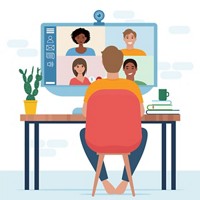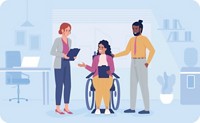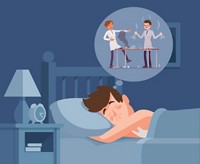Advertisement
Grab your lab coat. Let's get started
Welcome!
Welcome!
Create an account below to get 6 C&EN articles per month, receive newsletters and more - all free.
It seems this is your first time logging in online. Please enter the following information to continue.
As an ACS member you automatically get access to this site. All we need is few more details to create your reading experience.
Not you? Sign in with a different account.
Not you? Sign in with a different account.
ERROR 1
ERROR 1
ERROR 2
ERROR 2
ERROR 2
ERROR 2
ERROR 2
Password and Confirm password must match.
If you have an ACS member number, please enter it here so we can link this account to your membership. (optional)
ERROR 2
ACS values your privacy. By submitting your information, you are gaining access to C&EN and subscribing to our weekly newsletter. We use the information you provide to make your reading experience better, and we will never sell your data to third party members.
Employment
Bench & Cubicle
Communicating in the socially-distanced workplace
How will we talk to one another once we’re all back in the office?
by Chemjobber, special to C&EN
July 14, 2020
| A version of this story appeared in
Volume 98, Issue 28

The coronavirus pandemic has warped our worlds, so it’s no surprise it’s bending communication in laboratory settings as well.
Having worked through the pandemic in a socially distanced, on-campus work setting, I can tell you that communication around the lab is getting both easier and harder. I was recently in a room with mask-wearing scientists communicating about a project. Masks clearly make communicating more difficult. Words are muffled, and we lose the ability to read facial expressions when faces are obscured.
What other tools do we have in the lab to get our point across? Sure, there’s Zoom, Skype, FaceTime, and other electronic means. But what about the humble sticky note? It’s small, it sticks around, and its rainbow of colors can catch our attention immediately. I don’t know where you like to put your sticky notes for your coworkers, but I like to put them right in the middle of their computer screen—I can be obnoxious like that. It’s a great way to get people’s attention, especially when it’s a simple message like, “Sign and return release,” or “Find me when you’re back.” A sticky note on a key instrument that says “NOT WORKING” speaks volumes about the frustration and irritation that must have happened before someone scrawled out that note before leaving at 2 a.m.
Support nonprofit science journalism
C&EN has made this story and all of its coverage of the coronavirus epidemic freely available during the outbreak to keep the public informed. To support us:
Donate Join Subscribe
There are many other nonverbal means of communicating with colleagues. I’ve always enjoyed drawing things on the sash of my laboratory hood. Two or three people can discuss the particulars of a mechanism or an analytical chemistry problem with just a couple of markers. And hood sashes are a great place to communicate potential chemical hazards. For example, inspired by Dow Chemical, the University of Minnesota has developed safe operating cards to put on hood sashes to detail ongoing reactions and key contact information. Signs and other formalized procedures can allow you to pass information between groups without physically being there.
At my workplace, I’ve admired the simple status board that our quality control group uses to lay out the various tests that need to be performed on incoming materials. It’s simple, it’s fast, and we can get critical information on which tests are complete, which lots have yet to be processed, and which lots have failed release testing—all without bothering your coworkers. With the pandemic and the need to socially distance by splitting teams into shifts, a simple status board can keep a team on the same page and moving in the right direction. It doesn’t need to be fancy; I know that a tiny red star next to the lot code means, “This is a high-priority sample.”
Beyond all of this, what are we to do when we need to speak one-on-one? There are plenty of electronic means for people to speak with one another, but I think it’s important to create space for in-person conversations. I don’t know about your workplace, but if there is space for you to have a socially distanced outdoor conversation (you know, the kind where you can perhaps raise your voice in frustration if you need to), taking a walk outside with some social distancing might be the right thing to do.
Figuring out what works best for what situations will be challenging, especially because the science of how the novel coronavirus spreads seems to be changing week by week. Until we get a vaccine, many of our communication strategies in the workplace, such as face-to-face meetings and in-person seminars, are going to have to change. Sure, you can talk to your coworkers in the parking lot, but you can’t give a slide presentation out there. Those intimate meetings between bosses and subordinates where the stakes are high and key scientific hypotheses are put to the test? Those will have to be held somewhere other than in a cramped conference room.
If you want a break from Zoom calls and you don’t want to write a three-page email, being flexible and thinking about the other communication tools you have available in the workplace will be vital in navigating this COVID-19 world.
Chemjobber is an industrial chemist who blogs about the chemistry job market at chemjobber.blogspot.com. Find all his columns for C&EN and suggest future topics at cenm.ag/benchandcubicle.
Views expressed are those of the author and not necessarily those of C&EN or ACS..





Join the conversation
Contact the reporter
Submit a Letter to the Editor for publication
Engage with us on Twitter